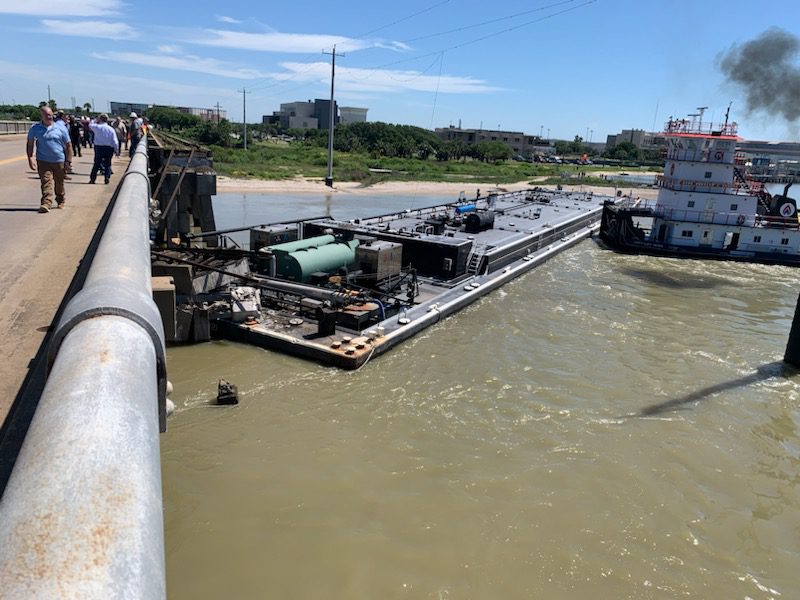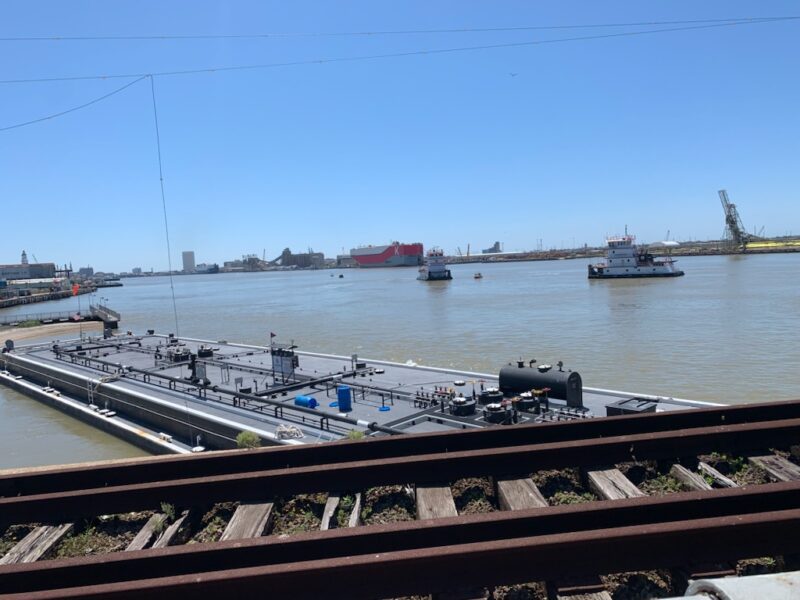Ships Fleeing The Red Sea Now Face Perilous African Weather
By Alex Longley and Paul Burkhardt (Bloomberg) –Ships sailing around the southern tip of Africa are wrestling with a bout of bad weather that has already run one vessel aground and...


Photo courtesy Galveston County Office of Emergency Management
A barge strike on Galveston Island’s Pelican Island Bridge on the Gulf Intercoastal Waterway has led to the closure of the waterway and reports of pollution.
The U.S. Coast Guard and multiple other state and local agencies are responding.
Coast Guard Sector Houston-Galveston watchstanders received a report at 9:48 a.m. reporting a 321-foot barge, MMLP 321, allided with the Pelican Island Causeway.
The MMLP 321 was reported to be carrying 30,000 barrels of vacuum gas oil, some of which has been released.
The barge has a capacity of 30,000 gallons, but the leaked amount remains undetermined.
3,000 feet of containment boom has been deployed in the vicinity of the allision.
The intercoastal waterway has been closed from Pelican Cut (mile marker 351.5) to the Galveston Causeway (mile marker 357.3) and a 5.8-mile safety zone has been issued for the surrounding waters. Mariners are urged to avoid the area.


Following the collision, power to Pelican Island, home to Texas A&M Galveston, was temporarily disrupted but has since been restored with secondary power. Both vehicle traffic across the Pelican Island Bridge and vessel traffic in the channel have been suspended pending further investigation.
There have been no reported injuries reported.
The Texas Department of Transportation is currently assessing the structural impact to the Pelican Island Bridge. In the meantime, the intracoastal waterway remains closed to traffic.
Several agencies, including the Galveston City Office of Emergency Management, Galveston County Office of Emergency Management, Galveston City Fire and EMS, Texas Department of Transportation, Texas A&M Galveston, Port of Galveston Police, Galveston Police Department, Texas Department of Public Safety, and the Galveston County Health District are on the scene. They continue to assess the situation alongside their partners.
Vacuum Gas Oil (VGO) is an intermediate petroleum product derived during the vacuum distillation of crude oil, used primarily as a refinery feedstock, and can be hazardous upon contact.
Join the gCaptain Club for curated content, insider opinions, and vibrant community discussions.


Join the 107,179 members that receive our newsletter.
Have a news tip? Let us know.
Access exclusive insights, engage in vibrant discussions, and gain perspectives from our CEO.
Sign Up




Maritime and offshore news trusted by our 107,179 members delivered daily straight to your inbox.



Essential news coupled with the finest maritime content sourced from across the globe.
Sign Up